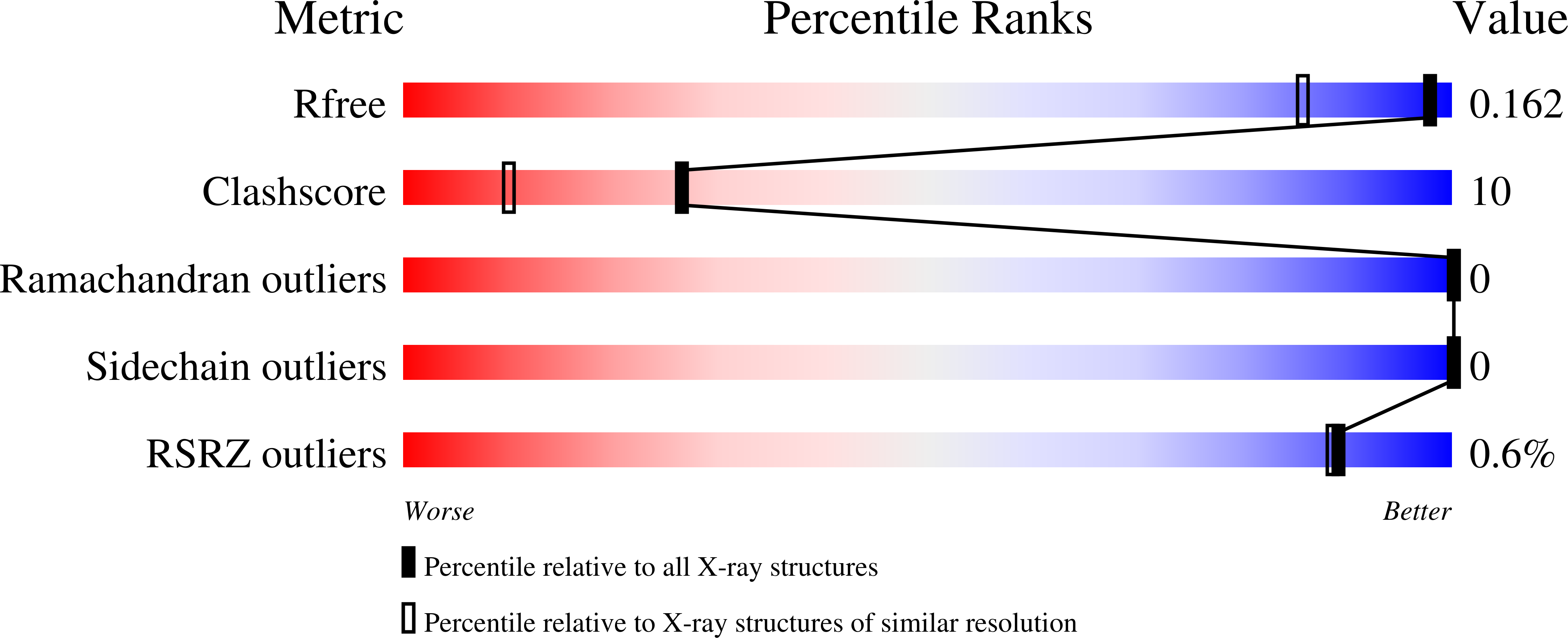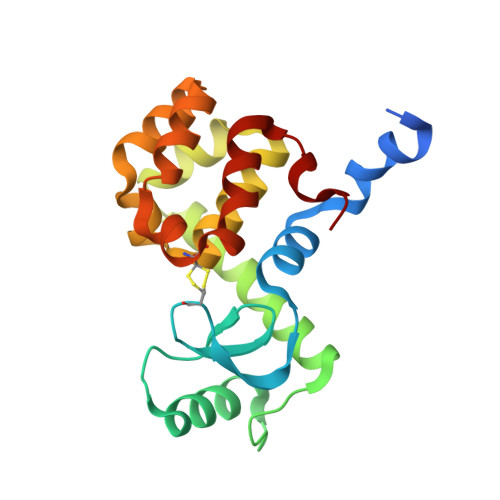Engineering a model protein cavity to catalyze the Kemp elimination.
Merski, M., Shoichet, B.K.(2012) Proc Natl Acad Sci U S A 109: 16179-16183
- PubMed: 22988064
- DOI: https://doi.org/10.1073/pnas.1208076109
- Primary Citation of Related Structures:
4E97, 4EKP, 4EKQ, 4EKR, 4EKS - PubMed Abstract:
Synthetic cavitands and protein cavities have been widely studied as models for ligand recognition. Here we investigate the Met102 → His substitution in the artificial L99A cavity in T4 lysozyme as a Kemp eliminase. The resulting enzyme had k(cat)/K(M) = 0.43 M(-1) s(-1) and a (k(cat)/K(M))/k(uncat) = 10(7) at pH 5.0. The crystal structure of this enzyme was determined at 1.30 Å, as were the structures of four complexes of substrate and product analogs. The absence of ordered waters or hydrogen bonding interactions, and the presence of a common catalytic base (His102) in an otherwise hydrophobic, buried cavity, facilitated detailed analysis of the reaction mechanism and its optimization. Subsequent substitutions increased eliminase activity by an additional four-fold. As activity-enhancing substitutions were engineered into the cavity, protein stability decreased, consistent with the stability-function trade-off hypothesis. This and related model cavities may provide templates for studying protein design principles in radically simplified environments.
Organizational Affiliation:
Department of Pharmaceutical Chemistry, University of California-San Francisco, San Francisco, CA 94158-2550, USA.


















